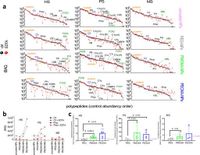Recent research highlights the potential of polyoxazolines as a safer alternative to polyethylene glycol in nanomedicine design, showing a complex interplay between immune responses in different animal models.
As traditional poly(ethylene glycol) (PEG) begins to face scrutiny due to emerging immunogenicity risks, polyoxazolines—including poly-2-methyl-2-oxazoline and poly-2-ethyl-2-oxazoline—are gaining traction for use in nanoparticle manufacturing processes. These materials reportedly exhibit remarkable long-circulating properties similar to their PEG counterparts without the same level of immune response. Nonetheless, the mechanisms governing this process differ significantly between species, which may have critical ramifications for the application of nanomedicine in humans.
In a study led by a team of researchers published in the journal Nature Biomedical Engineering, the authors examined how polyoxazoline-coated nanoparticles interact with the immune systems of mice, pigs, and humans, thus revealing distinct opsonization behavior that could reshape future nanomedicine development.
Opsonization, a process where nanoparticles are tagged by proteins for recognition and clearance by the immune system, was evaluated using organically modified silica nanoparticles (ORMOSIL NPs) coated with either PEG or polyoxazolines. Notably, the team discovered that while polyoxazolinated nanoparticles managed to evade murine opsonization and subsequent phagocytosis by immune cells, they were still recognized by porcine immune cells due to the interaction with a specific immune protein known as ficolin 2.
“Our findings illuminate critical species differences in how nanoparticles are opsonized and recognized by macrophages, which are key players in the immune response,” said the authors of the article. They noted that in contrast to mice, where complex complement activation pathways hindered nanoparticle uptake, in pigs and humans, both ficolin opsonization and complement pathways effectively promoted the recognition and uptake of the nanoparticles.
Ficolins, being pattern-recognition proteins, play a vital role in innate immunity, and their interaction with polyoxazolines points towards an evolutionary adaptation of the immune system to various nanoparticle compositions. Significantly, the presence of ficolin 2 ensured preferential uptake of polyoxazolinated nanoparticles by porcine monocytes, exemplifying the nuanced role of immune factors across species.
Moreover, the researchers analyzed how different human sera demonstrated variable ficolin opsonization due to inherent genetic polymorphisms, indicating that individual differences could affect nanoparticle clearance rates in humans. Such variability adds a layer of complexity to predicting therapeutic outcomes through nanomedicine.
In conclusion, this study underscores that the assurance of stealth properties in nanoparticles developed in murine models may not necessarily apply to other species, including humans. The observed interspecies discrepancies in opsonization processes for polyoxazolines could direct researchers to optimize nanoparticle formulations for targeted therapies while minimizing unwanted immune responses. This could revolutionize the design of the next generation of nanomedicines, making them safer and more effective in clinical settings.

